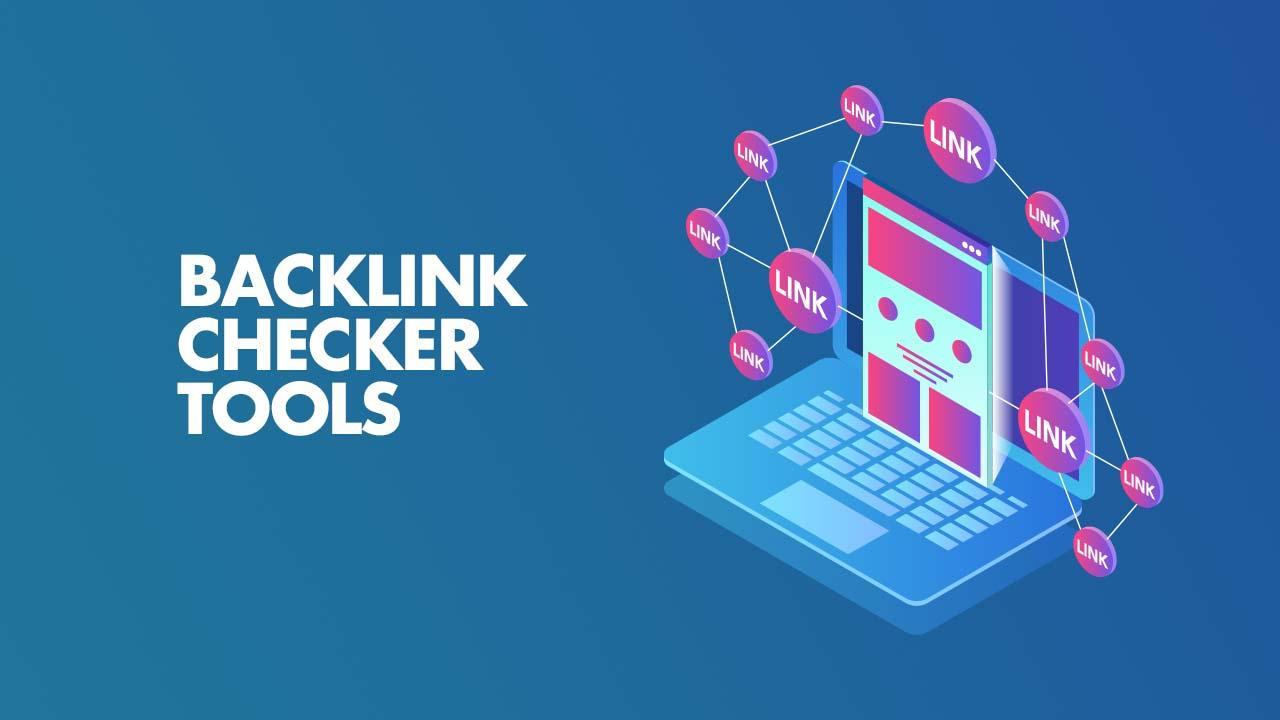
How to Check Backlinks for Free: A Comprehensive Guide to Boost Your SEO

How to Check Backlinks for Free: A Comprehensive Guide to Boost Your SEO
A few years ago, I launched my first blog, a passion project about sustainable gardening. I poured my heart into writing detailed posts, but after months of effort, my traffic was barely a trickle. Frustrated, I dove into the world of SEO and stumbled upon the concept of backlinks—those magical links from other websites pointing to yours that signal authority to search engines. But how could I, a newbie with a tight budget, check my backlinks without splurging on premium tools? That question sparked a journey of discovery, and today, I’m sharing everything I’ve learned about checking backlinks for free in a way that’s accessible, practical, and yes, even a little fun.
Backlinks are like digital votes of confidence. When a reputable website links to your content, it tells Google and other search engines that your site is trustworthy and valuable. But not all backlinks are created equal—some can even harm your rankings if they come from spammy sources. Knowing how to check your backlinks is crucial for understanding your site’s SEO health, identifying growth opportunities, and staying ahead of potential issues. In this guide, I’ll walk you through the best free methods to check backlinks, share actionable tips, and sprinkle in some hard-earned wisdom from my own experience. Whether you’re a blogger, small business owner, or just curious about SEO, this post has you covered.
Why Checking Backlinks Matters
Before we dive into the how, let’s talk about the why. Imagine you’re at a networking event, and someone influential vouches for you in front of a crowd. That’s what a good backlink does for your website—it boosts your credibility. But if someone shady name-drops you, it can raise eyebrows. Similarly, low-quality or toxic backlinks can hurt your site’s reputation with search engines. By regularly checking your backlinks, you can:
- Understand which websites are linking to you and assess their quality.
- Identify opportunities to build relationships with other site owners.
- Spot and disavow harmful links that could trigger penalties.
- Track your competitors’ backlink strategies to stay competitive.
When I first checked my blog’s backlinks, I was shocked to find a mix of links from gardening forums (yay!) and sketchy directories I’d never heard of (yikes!). Knowing what was out there helped me clean up my link profile and focus on earning better links. Let’s explore how you can do the same—without spending a dime.
Free Tools to Check Backlinks
The good news? You don’t need an expensive subscription to get a clear picture of your backlinks. Several free tools offer robust insights, and I’ll guide you through the best ones. Each has its strengths, so you can mix and match based on your needs.
Google Search Console: Your Free SEO Swiss Army Knife
If you have a website, Google Search Console (GSC) should be your first stop. It’s a free tool provided by Google that gives you a window into how the search engine sees your site, including your backlinks. Setting up GSC is straightforward—just verify your site ownership, and you’re in.
To check backlinks in GSC, head to the “Links” section in the left-hand menu. Under “External Links,” you’ll find a list of sites linking to your content, along with the specific pages they’re linking to. You can even see the anchor text used in these links. While GSC doesn’t provide as much detail as premium tools like Ahrefs, it’s a reliable starting point for understanding your link profile.
One thing I love about GSC is its authenticity. Since it’s Google’s own tool, the data comes straight from the source. When I checked my gardening blog’s backlinks, GSC showed me a handful of links from local gardening clubs—small wins that gave me ideas for outreach. The downside? The data can be limited, and it doesn’t show metrics like domain authority. Still, it’s a must-use for any site owner.
Ubersuggest: A Freemium Gem for Backlink Insights
Ubersuggest, created by digital marketing expert Neil Patel, is another fantastic free option. While it offers premium features, its free version lets you analyze backlinks without spending a cent. Just enter your website’s URL, navigate to the “Backlinks” tab, and you’ll see a list of linking domains, anchor texts, and even a basic domain score.
When I first used Ubersuggest, I was thrilled to discover a link from a popular homesteading blog. It wasn’t just a morale boost—it inspired me to reach out to similar sites for guest posts. Ubersuggest also lets you spy on competitors’ backlinks, which is a game-changer for brainstorming link-building strategies. The free version has limits on daily searches, so pace yourself or spread your research over a few days.
Moz Link Explorer: A Taste of Premium for Free
Moz is a heavyweight in the SEO world, and its Link Explorer tool offers a free tier that’s perfect for beginners. With a free Moz account, you can run up to 10 backlink queries per month. Enter your URL, and you’ll get a snapshot of your backlinks, including the number of linking domains and a “Domain Authority” score to gauge their quality.
What sets Moz apart is its focus on quality metrics. For example, it flags “spam score” to help you identify potentially harmful links. When I ran my blog through Moz, I spotted a couple of spammy links from unrelated directories. Armed with this info, I used Google’s Disavow Tool to distance my site from them. Moz’s free version is limited, but it’s a great way to dip your toes into advanced SEO analysis.
Backlink Watch: Simple and Straightforward
If you’re looking for a no-frills option, Backlink Watch is a free, web-based tool that delivers a quick list of backlinks for any URL. Just type in your site’s address, and it generates a report with details like anchor text and whether the link is “nofollow” (a tag that tells search engines not to pass SEO value). It’s not as polished as GSC or Ubersuggest, but it’s handy for a fast check.
I used Backlink Watch early on when I was curious about a competitor’s backlinks. It revealed a few forum links I hadn’t considered targeting, which led to some fruitful outreach. The tool can be slow and sometimes includes outdated data, so cross-check with other tools for accuracy.
Monitor Backlinks: A Sneaky Free Trial Hack
Monitor Backlinks offers a 30-day free trial that’s packed with features. While it’s not a permanently free tool, you can use the trial to dive deep into your backlink profile without paying. It provides detailed reports on linking domains, anchor text distribution, and even alerts for new or lost backlinks.
During my trial, I discovered a broken link pointing to my site from a gardening directory. I reached out to the site owner to fix it, turning a dead link into a live one. If you’re strategic, you can get a lot done in those 30 days—just don’t forget to cancel if you’re not ready to commit to a paid plan.
Manual Backlink Checking: The DIY Approach
Sometimes, the best insights come from rolling up your sleeves and doing things manually. While tools are great, a manual check can uncover nuances that automated reports miss. Here’s how to do it.
Google Search Operators
Google’s advanced search operators are like a secret weapon for SEO sleuths. To find sites linking to yours, use the “link:” operator followed by your website’s URL (e.g., link:example.com) in Google’s search bar. This pulls up a list of pages that link to your site. You can refine it further with operators like -inurl:(example.com) to exclude internal links.
When I tried this on my blog, I found a mention in a Reddit thread I hadn’t noticed before. It wasn’t a clickable link, but it was a chance to engage with the community and turn it into one. The downside? Google doesn’t show every backlink, and the results can be incomplete. Still, it’s a free way to spot opportunities.
Social Media and Forums
Don’t overlook platforms like X, Reddit, or niche forums. Search for your website’s URL on these platforms to see if anyone’s linking to or mentioning your content. On X, for example, you can type from:username site:example.com to find posts linking to your site. I once found a glowing review of my blog on a permaculture forum, which led to a collaboration with the forum’s admin.
Analyzing Backlink Quality
Finding backlinks is only half the battle—understanding their quality is key. A link from a high-authority site like a university or a well-known blog carries more weight than one from a random directory. Here’s how to evaluate your backlinks:
- Relevance: Does the linking site relate to your niche? A backlink from a gardening blog is gold for my site, but a link from a tech forum might not help much.
- Authority: Check the linking site’s credibility using tools like Moz or Ubersuggest. Higher domain authority usually means a stronger SEO boost.
- Anchor Text: The clickable text of the link should ideally include relevant keywords. For example, “sustainable gardening tips” is better than “click here.”
- Nofollow vs. Dofollow: Dofollow links pass SEO value, while nofollow links don’t. Both have value, but dofollow links are more impactful for rankings.
When I analyzed my backlinks, I noticed a nofollow link from a high-traffic lifestyle blog. While it didn’t boost my SEO directly, it drove real visitors to my site, proving that even nofollow links can be valuable.
What to Do with Your Backlink Data
Once you’ve checked your backlinks, it’s time to act. Here are some strategies to make the most of your findings:
- Reach Out for More Links: If a reputable site links to you, thank them and explore opportunities for guest posts or collaborations. I landed a guest post on a homesteading blog this way.
- Disavow Toxic Links: Use Google’s Disavow Tool to tell search engines to ignore harmful links. Be cautious—only disavow links you’re sure are spammy.
- Spy on Competitors: Use the same free tools to check competitors’ backlinks. If they’re getting links from a particular site, you might be able to pitch there too.
- Monitor Regularly: Backlinks change over time. Set a reminder to check monthly to stay on top of new links or lost ones.
Common Pitfalls to Avoid
Checking backlinks is straightforward, but there are traps to watch out for. First, don’t obsess over quantity—100 low-quality links are less valuable than one from a trusted site. Second, avoid relying on a single tool; cross-reference data for accuracy. Finally, don’t ignore your link profile. I learned this the hard way when a spammy link triggered a temporary dip in my rankings. Regular checks keep you proactive.
FAQ: Your Backlink Questions Answered
What Are Backlinks and Why Are They Important?
Backlinks are links from external websites pointing to your site. They’re a core part of SEO because search engines like Google use them to gauge your site’s authority and relevance. High-quality backlinks from reputable sites can boost your rankings, drive traffic, and establish your brand as a trusted voice in your niche.
Can I Check Backlinks Without Paying for Tools?
Absolutely! Tools like Google Search Console, Ubersuggest, Moz Link Explorer, and Backlink Watch offer free ways to check backlinks. You can also use Google search operators or manually search platforms like X and Reddit. Combining these methods gives you a comprehensive view without spending a dime.
How Do I Know If a Backlink Is Good or Bad?
A good backlink comes from a relevant, high-authority site with natural anchor text and ideally a dofollow attribute. Bad backlinks often come from spammy, unrelated sites or directories with low credibility. Tools like Moz can help you assess quality by checking domain authority and spam scores.
How Often Should I Check My Backlinks?
Aim to check your backlinks monthly to stay on top of new links, lost links, or potential issues. Regular monitoring helps you spot opportunities for outreach and address harmful links before they impact your SEO.
What Should I Do If I Find Toxic Backlinks?
If you identify toxic backlinks, use Google’s Disavow Tool to tell search engines to ignore them. Be cautious—only disavow links you’re certain are harmful, as disavowing good links can hurt your SEO. Keep a record of disavowed links in case you need to revisit them.
Can I Check My Competitors’ Backlinks for Free?
Yes! Tools like Ubersuggest and Moz Link Explorer let you analyze competitors’ backlinks in their free versions. Enter their URL to see where their links are coming from, then use those insights to target similar sites for your own link-building efforts.
Conclusion: Take Control of Your Backlink Strategy
Checking backlinks for free is more than just a cost-saving hack—it’s a gateway to understanding your website’s place in the digital ecosystem. From my early days of fumbling through SEO to now confidently managing my blog’s link profile, I’ve learned that knowledge is power. Tools like Google Search Console, Ubersuggest, and Moz Link Explorer make it possible to gain deep insights without breaking the bank. Pair them with manual checks and a keen eye for quality, and you’re well on your way to boosting your site’s SEO.
Start by setting up Google Search Console if you haven’t already—it’s your foundation. Then, experiment with Ubersuggest or Moz to dig deeper into your link profile. Don’t shy away from manual searches on Google or platforms like X; they can uncover hidden gems. Most importantly, act on what you find—reach out to site owners, disavow toxic links, and keep an eye on your competitors. SEO is a marathon, not a sprint, and every step you take toward understanding your backlinks brings you closer to your goals.
So, grab a cup of coffee, fire up these tools, and dive into your backlink adventure. You might be surprised at what you discover—and how it transforms your site’s success.






